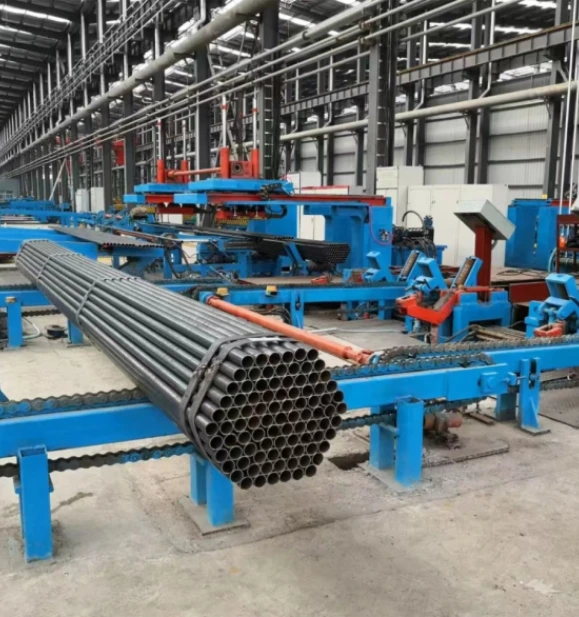shutter spring making machine
The Mechanisms Behind Shutter Spring Making Machines
In the modern manufacturing landscape, the precision and efficiency of machines define the quality of the produced goods. One such innovation is the shutter spring making machine, an essential equipment in industries focusing on window shutters and other mechanical applications. Understanding the mechanisms, functionalities, and significance of these machines sheds light on their pivotal role in manufacturing processes.
A Brief Overview of Shutter Springs
Shutter springs are critical components used in various types of shutters, including rolling shutters, security shutters, and Venetian blinds. Their primary function is to provide tension that helps in the smooth opening and closing of these systems. Made from durable materials, such as steel or high-quality plastics, these springs must possess the optimal balance of flexibility and strength to withstand repeated use without deforming or breaking.
The Importance of Spring Making Machines
The production of shutter springs requires precise engineering and manufacturing processes. Spring making machines are designed to automate and enhance the efficiency of this production line, ensuring consistency in quality while minimizing labor costs. This automation is critical in meeting the growing demands of the shutter industry, where scaled production is essential.
Key Components of Shutter Spring Making Machines
1. Wire Feeding Mechanism The first step in the spring-making process involves feeding wire into the machine. This component must ensure precise control over the wire’s tension and trajectory to avoid any kinks or snags.
2. Coiling Unit This is the heart of the spring making machine. It is responsible for shaping the wire into coils, which form the spring’s body. Advanced machines use CNC (Computer Numerical Control) technology to accurately control the dimensions of these coils, ensuring consistency across all produced springs.
3. Heat Treatment System Once the springs are coiled, they often undergo a heat treatment process to enhance their durability and elasticity. This step is crucial as it allows the springs to withstand the operational stresses they will face once installed.
shutter spring making machine

4. Finishing and Quality Check After heat treatment, the springs are typically subjected to various finishing processes, which may include grinding, polishing, or coating. A quality control unit examines the springs for any defects, ensuring that only top-grade products reach the market.
Technological Advances in Spring Making Machines
In recent years, the development of technology has revolutionized the capabilities of shutter spring making machines. Automation and robotics have significantly increased production speed and accuracy. The integration of intelligent software for monitoring and control allows manufacturers to track production metrics in real time, optimizing the workflow and reducing waste.
Additionally, advancements in materials science have led to the use of high-strength alloys and composites, which can increase the performance and lifespan of springs. Environmental considerations are also becoming more prominent, with manufacturers seeking to minimize waste and energy consumption throughout the production process.
The Economic Impact of Spring Making Machines
The efficiency brought by shutter spring making machines translates directly into economic benefits for manufacturers. The ability to produce high volumes of consistent quality springs without significant labor input reduces overall production costs. This cost-effectiveness can lead to lower prices for end consumers and increased competitiveness in the market.
Moreover, as the demand for automated and secure window solutions continues to grow, investing in advanced spring making technology opens doors to new business opportunities. Companies can expand their product lines and cater to a broader customer base, ultimately enhancing their market position.
Conclusion
In conclusion, shutter spring making machines are an integral part of the modern manufacturing sector, specifically in the production of window shutter systems. Their advanced mechanisms and technological innovations not only enhance efficiency and quality but also contribute significantly to the economic landscape of manufacturing. As industries continue to evolve, the importance of such machines will only grow, underlining the necessity of investing in state-of-the-art technology to stay competitive in a fast-paced market. Ultimately, the journey of creating a simple spring encapsulates the complexities of modern manufacturing, where technology and innovation fuse to meet the demands of consumers worldwide.
-
High Frequency Straight Seam Welded Pipe Production Line-BzZhou Xinghua Machinery Equipment Manufacturing Co., LTD.|Precision Welding, High EfficiencyNewsJul.30,2025
-
High Frequency Straight Seam Welded Pipe Production Line|BzZhou Xinghua|Precision Welding&EfficiencyNewsJul.30,2025
-
High Frequency Straight Seam Welded Pipe Production Line - BzZhou Xinghua|Precision Engineering&EfficiencyNewsJul.30,2025
-
High-Frequency Straight Seam Welded Pipe Production Line-BzZhou Xinghua Machinery Equipment Manufacturing Co., LTD.NewsJul.30,2025
-
High-Frequency Straight Seam Welded Pipe Production Line-BzZhou Xinghua Machinery Equipment Manufacturing Co., LTD.|Precision Manufacturing, High EfficiencyNewsJul.30,2025
-
High Frequency Straight Seam Welded Pipe Production Line-BzZhou Xinghua Machinery Equipment Manufacturing Co., LTD.|Precision Steel Pipe Manufacturing&Industrial EfficiencyNewsJul.29,2025


